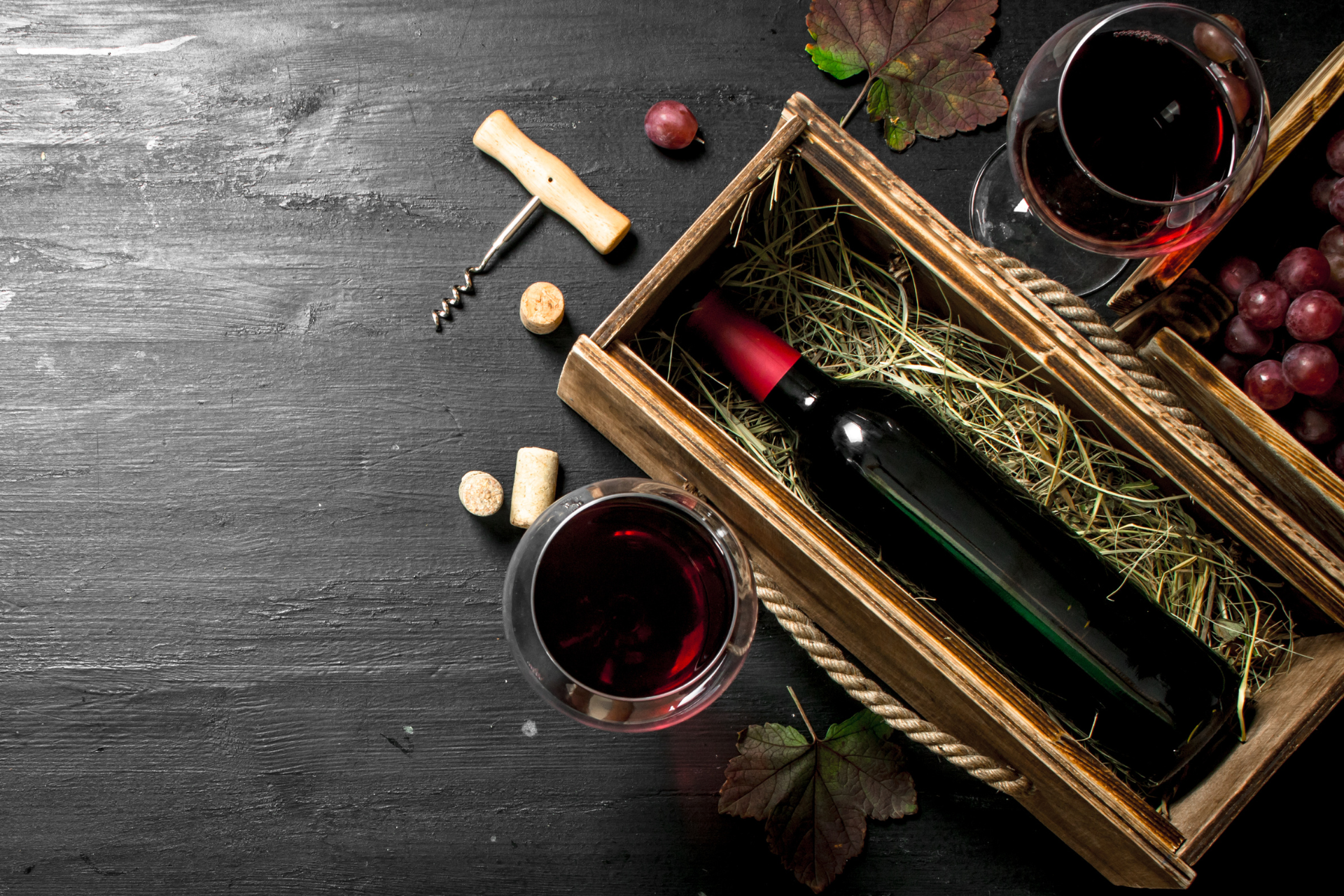Cabernet Sauvignon: The King of Red Wines
Cabernet Sauvignon: The King of Red Wines

Cabernet Sauvignon stands as one of the world’s most celebrated and widely planted red wine grape varieties.
Revered for its power, structure, and remarkable aging potential, this grape has shaped the identity of classic wine regions from Bordeaux to California and beyond.
Let's explore the origins and characteristics of Cabernet Sauvignon, delve into how it’s made, and provide expert guidance on pairing it with food and cheese for an unforgettable dining experience.
What is Cabernet Sauvignon?
Cabernet Sauvignon is a full-bodied red wine known for its deep colour, firm structure, and complex flavours.
Its signature profile features dark fruit notes—think blackcurrant (cassis), blackberry, and plum—layered with herbal, earthy, and sometimes spicy nuances.
Aromas of cedar, mint, tobacco, and even green capsicum (attributed to pyrazines) are common, especially in wines from cooler climates.
Origins and Global Reach
Originating in Bordeaux, France, Cabernet Sauvignon is the offspring of Cabernet Franc and Sauvignon Blanc.
Its adaptability has led to plantings in almost every major wine-producing country, from Australia and Chile to the United States and South Africa. While Bordeaux blends it with Merlot and other grapes, New World regions often showcase it solo, resulting in a spectrum of styles from herbal and graphite-laden to lush and fruit-forward.
How Cabernet Sauvignon is Made
Crafting Cabernet Sauvignon is a meticulous process that balances tradition and innovation to coax out the grape’s best qualities.
Here’s a step-by-step overview of how this iconic wine is produced:
1. Harvesting
Grapes are harvested at optimal ripeness—by hand or machine—usually in autumn.
Timing is crucial, as underripe grapes can yield overly herbaceous wines, while overripe fruit can lead to excessive alcohol and jammy flavours.
2. Crushing and Destemming
Once harvested, grapes are separated from their stems and gently crushed.
Some winemakers may leave a portion of stems to add structure and complexity
3. Fermentation
The crushed grapes (must) are transferred to fermentation vessels, often stainless steel or oak. Yeast is added to convert sugars into alcohol. For red wines like Cabernet Sauvignon, fermentation occurs with the skins, which impart colour, tannin, and flavour.
The process typically lasts 7–14 days at a controlled temperature of 27–30°C (81–86°F).
4. Cap Management
During fermentation, grape skins rise to form a “cap.”
Winemakers regularly punch down or pump over the cap to ensure maximum extraction of colour, tannins, and flavour.
5. Pressing
After fermentation, the wine is separated from the skins and seeds by pressing.
The free-run wine (from draining) is usually kept separate from the press wine (from pressing), as the latter can be more tannic and astringent.
6. Malolactic Fermentation
Nearly all red wines, including Cabernet Sauvignon, undergo a secondary fermentation called malolactic fermentation.
This process converts sharp malic acid into softer lactic acid, enhancing the wine’s texture and adding subtle creamy or vanilla notes
7. Maturation
Cabernet Sauvignon is typically matured in oak barrels (French, American, or Hungarian) for 9–18 months.
Oak aging imparts flavours of vanilla, cedar, spice, and sometimes chocolate or coffee, while allowing the wine’s tannins to soften and integrate.
8. Fining, Filtering, and Bottling
Before bottling, the wine may be fined (to remove unwanted particles) and filtered for clarity and stability.
Some producers skip these steps to preserve maximum flavour and texture.
9. Aging
Cabernet Sauvignon is renowned for its aging potential.
Young wines are robust and tannic, but with time, they develop complex aromas of earth, leather, tobacco, and spice, while the fruit flavours mellow and integrate.
Tasting Notes and Styles
Cabernet Sauvignon’s profile varies with region, climate, and winemaking approach:
| Region | Fruit Notes | Secondary Flavors | Structure & Style |
|---|---|---|---|
| Bordeaux | Blackcurrant, plum | Graphite, violets, tobacco | Herbal, earthy, firm tannins |
| California | Black cherry, blackberry | Licorice, vanilla | Fruit-forward, lush, softer tannins |
| Australia | Cassis, mulberry | Mint, eucalyptus, cedar | Medium to full-bodied, balanced |
| Chile | Blackberry, plum | Green pepper, spice | Fresh, vibrant, herbal |
Food Pairing with Cabernet Sauvignon
Cabernet Sauvignon’s bold structure and deep flavours make it a versatile partner for a range of dishes.
Its tannins love protein and fat, which help soften the wine and bring out its best characteristics.
Classic Pairings
- Red Meat: Grilled steaks, braised beef, lamb chops, and burgers are classic matches. The wine’s tannins cut through the richness, while its acidity refreshes the palate.
- Game: Venison, duck, and other game meats pair beautifully, especially with older, more nuanced Cabernets.
- Hearty Stews: Beef bourguignon, moussaka, and Moroccan tagines benefit from the wine’s depth and structure.
Vegetarian Options
- Grilled or Roasted Vegetables: Eggplant, mushrooms, and root vegetables, especially when charred or roasted, echo the wine’s earthy notes.
- Polenta with Roasted Mushrooms: The creaminess of polenta and umami-rich mushrooms create a satisfying, meat-free pairing.
- Grilled Radicchio with Balsamic Glaze: The bitterness and sweetness complement the wine’s fruit and tannin.
Unconventional Pairings
- Bacon-Wrapped Dates: The sweet and savory combination, particularly when stuffed with blue or goat cheese, makes for a unique and delicious match.
- Gourmet Burgers: Add sharp cheese and bacon for a flavour-packed experience.
Cheese Pairing with Cabernet Sauvignon
Pairing cheese with Cabernet Sauvignon requires attention to texture and intensity.
The wine’s tannins can clash with soft, creamy cheeses but shine alongside aged, firm varieties.
Best Cheeses for Cabernet Sauvignon
| Cheese Type | Why It Works | Examples |
|---|---|---|
| Aged Cheddar | Rich, nutty, and sharp balances tannin and matches wines intensity | Cabot Clothbound, English farmhouse cheddar |
| Aged Gouda | Nutty, caramelized flavours complement the wines fruit and oak notes | Beemster 18-Month, Dutch aged goudas |
| Aged Gruyere | Complex, nutty, and firm holds up to bold Cabernets | Swiss Gruyere, Pleasant Ridge Reserve |
| Sheeps Milk Cheeses | Subtle gamey notes and firm texture | Ossau-Iraty, Pecorino, Manchego |
| Firm Goat Cheese | Mild creaminess enhances fruit and softens tannin | Aged goat gouda, hard chevre |
| Comte | Nutty, slightly sweet, and complex | French Comte |
Cheeses to Avoid
- Soft-Ripened Cheeses (e.g., Brie, Camembert): These can accentuate tannins, making the wine taste harsh and the cheese chalky.
- Fresh Cheeses (e.g., Mozzarella, Ricotta): Too mild and delicate to stand up to Cabernet’s intensity.
Pairing Tips
- For young Cabernets with robust tannins, opt for aged, hard cheeses like cheddar or gouda.
- For older, softer Cabernets, semi-firm cheeses such as aged sheep’s milk or Comté work well.
- When in doubt, aged cheddar is a reliable choice that complements most styles of Cabernet Sauvignon
Serving and Enjoying Cabernet Sauvignon
- Temperature: Serve at 16–18°C (60–65°F) for optimal aroma and flavour.
- Glassware: Use a large, tulip-shaped glass to allow the wine to breathe and concentrate its bouquet.
- Decanting: Young Cabernets benefit from decanting to soften tannins and open up aromatics. Older bottles may need gentle decanting to remove sediment.
Conclusion
Cabernet Sauvignon’s enduring appeal lies in its depth, structure, and versatility.
Whether you’re savouring a youthful, fruit-driven wine or an aged, complex bottle, pairing it thoughtfully with food and cheese can elevate any meal.
From classic steak dinners to creative vegetarian dishes and curated cheese boards, Cabernet Sauvignon proves time and again why it’s the king of reds—commanding attention at the table and rewarding those who take the time to explore its many facets
Wine and Cheese Affair News


